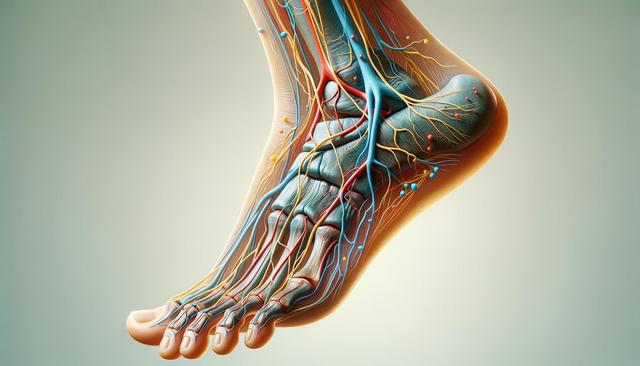What Is Foot Neuropathy?
Foot neuropathy, also known as peripheral neuropathy affecting the feet, is a condition where nerves in the feet become damaged or dysfunctional. This leads to a variety of symptoms that can range from mild discomfort to severe pain and loss of mobility. The condition affects the peripheral nervous system, which transmits signals between the central nervous system and the rest of the body. When these peripheral nerves are impaired, the communication between the brain and the feet becomes disrupted.
There are several types of foot neuropathy, including sensory neuropathy, which affects sensation; motor neuropathy, which affects muscle movement; and autonomic neuropathy, which impacts involuntary functions. In many cases, individuals may experience a combination of these types. Recognizing the type of neuropathy can help guide treatment and symptom management efforts more effectively.
Common Causes of Foot Neuropathy
Foot neuropathy has a variety of causes, many of which are related to underlying health conditions. One of the most common culprits is diabetes, which can lead to diabetic neuropathy due to prolonged periods of high blood sugar damaging the nerves. Other causes include:
- Alcohol abuse, which can lead to nutritional deficiencies and nerve damage
- Vitamin deficiencies, particularly B vitamins
- Autoimmune diseases such as lupus or rheumatoid arthritis
- Infections like Lyme disease or shingles
- Exposure to toxins, including certain chemotherapy drugs or heavy metals
In some cases, the cause of foot neuropathy remains idiopathic, meaning it is not clearly identifiable. Regardless of the cause, early detection and addressing any underlying health issues are critical to preventing further nerve damage.
Recognizing the Symptoms
The symptoms of foot neuropathy can vary widely depending on the type and severity of nerve damage. Some individuals may experience intermittent discomfort, while others face chronic pain and loss of function. Common symptoms include:
- Tingling or “pins and needles” sensations in the feet
- Numbness or reduced ability to feel temperature or pain
- Sharp, burning, or stabbing pain
- Muscle weakness or cramps
- Loss of coordination or balance
Because symptoms often develop gradually, they may be mistaken for other conditions or simply attributed to aging. If you notice persistent or worsening symptoms, it’s important to consult a healthcare provider for an accurate diagnosis and treatment plan.
Diagnosis and Medical Evaluation
Diagnosing foot neuropathy typically involves a combination of medical history review, physical examination, and diagnostic tests. A healthcare provider will ask about any existing health conditions, medications, and lifestyle factors that could contribute to nerve damage. Physical exams may include checking reflexes, muscle strength, and sensitivity to touch or vibration.
Diagnostic testing can include:
- Blood tests to identify underlying causes such as vitamin deficiencies or diabetes
- Nerve conduction studies to measure nerve signal strength and speed
- Electromyography (EMG) to assess electrical activity in muscles
- Imaging studies such as MRI to rule out other causes like herniated discs
These evaluations help determine the extent of nerve damage and guide appropriate treatment strategies. Early diagnosis can lead to more effective management and potentially slow the progression of the condition.
Treatment and Management Options
While foot neuropathy cannot always be cured, especially in cases of permanent nerve damage, many treatment options are available to manage symptoms and improve quality of life. The first step is to address any underlying conditions contributing to the neuropathy. For example, managing blood glucose levels in individuals with diabetes can help prevent further nerve damage.
Common treatment strategies include:
- Medications like pain relievers, anti-seizure drugs, or antidepressants that help control nerve pain
- Topical treatments such as capsaicin cream or lidocaine patches
- Physical therapy to improve strength, balance, and coordination
- Assistive devices like orthotic shoe inserts or braces
- Lifestyle changes including a healthy diet, regular exercise, and limiting alcohol consumption
In addition to medical treatments, many individuals find relief through complementary therapies such as acupuncture, massage, and relaxation techniques. It’s important to work with a healthcare provider to develop a personalized treatment plan that suits your specific needs and condition severity.
Conclusion: Living with Foot Neuropathy
Foot neuropathy can present daily challenges, but with proper diagnosis and a well-rounded treatment approach, many individuals can manage symptoms effectively and maintain an active lifestyle. Early intervention and ongoing care are key to preventing further complications and improving overall well-being. If you suspect you may be experiencing symptoms of foot neuropathy, don’t delay seeking medical advice. Understanding your condition is the first step toward taking control of your health and comfort.




Leave a Reply